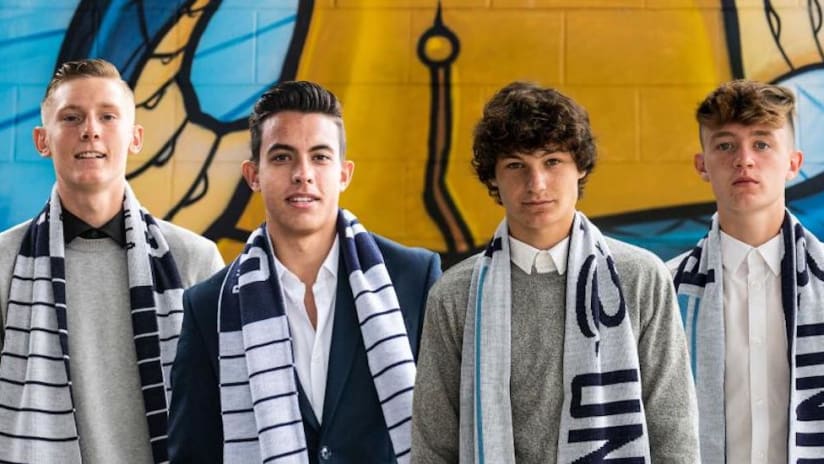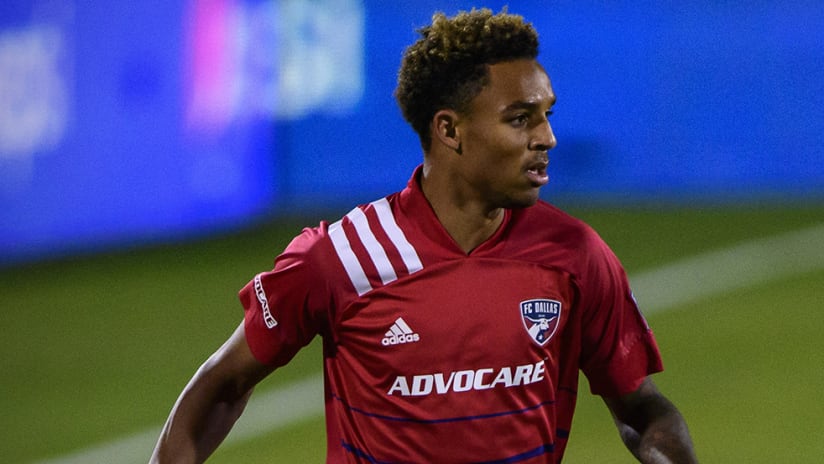Welcome back to the Thursday Q&A series, where we focus on one particular topic – today's being Jordan Morris – and ask you to react, share, and discuss in the comments section. However, feel free to ask about anything game-related (MLS, USL, NASL, USMNT, CanMNT, etc.) over the next several hours.
SUBSCRIBE TO EXTRATIME RADIO:iTunes | Stitcher | RSS FEED | DOWNLOAD
Jordan Morris has come home. The US international striker spurned an offer from German Bundesliga club Werder Bremen to sign a Homegrown player contract with his hometown team, the Seattle Sounders. And in the Emerald City there was much rejoicing.
The reason for celebration is obvious: Morris is an exceptional prospect, and as soon as he put pen to paper became the odds-on favorite to be the 2016 Rookie of the Year (though his former college and current US teammate Brandon Vincent is and shall remain my pick for the award). And as Seattle GM Garth Lagerwey said during the SuperDraft, it was essentially "Morris or bust." While the Sounders have other talented kids in their academy, none of them are Morris, and none of them would have commanded the same kind of outlay of resources.
"From a purely salary cap standpoint, either you get Jordan Morris or you don't. There isn't another Homegrown in our pipeline and in our group that we're gonna give that money to," Lagerwey explained on the draft webcast. "Either it will go unused, or it will go to Jordan."
So to make it clear: This was a zero-sum game for the Sounders, which is why the whole negotiation felt so urgent and why the signing was greeted with such relief. There was no other way to get this kind of talent into the roster:
That's obviously elite stuff, and I expect it to translate to MLS.
The question now turns to how, exactly, Morris fits into a Seattle lineup that already has three DP forwards inObafemi Martins,Clint DempseyandNelson Valdez. This is where it gets tricky, because "fit" is often as important as -- or more important than -- raw talent.
For those who don't know, Morris played as a pure forward at Stanford in a pretty old-fashioned and uncomplicated 4-4-2 that often looked like a 4-2-2-2. This allowed him the freedom to move inside and out, check toward the ball or (much more often) play off the shoulder of the defenders to use his speed and absolutely devastating first touch. He's mostly done the same thing for both the full USMNT and the US U-23s.
That kind of game probably won't be an option in Rave Green. Even if Seattle kept the 4-4-2, Morris isn't going to unseat either Dempsey or Martins as a starter, and more to the point, it looks like the Sounders are going to move away from their "amoeba" to a 4-3-3 set.
There are a number of reasons why I think this will work. First is that Dempsey can very easily play on the left side of that formation, offering everythingKrisztian Nemethbrought to the table for Sporting KC last year and probably a little bit more.
Second, new left back Joevin Jonesoffers both an overlapping threat and another support valve in possession. Third, is that Morris can play a simplified, direct version of "winger" in the way thatEthan Finlaydoes for Columbus. Finlay is really just a second forward whose starting points are wide rather than a winger who comes inside. He doesn't need to do on-the-ball work in possession, he just needs to stretch the field vertically and horizontally
Finally, though, there is Oba. In order to get the best out of Morris, the Sounders need to be able to use his speed in behind defenses, and in Martins they have the league's best passing No. 9. He is a through-ball artist:
That's Oba, having dropped way off his line and away from pressure to pick up a pass and put Dempsey through. Now imagine this same type of play, except to A) a faster player, and B) with the run coming from outside-to-inside. That ball becomes a chance on goal.
It's not all going to be this easy, of course. Every team that plays a variation of the 4-3-3 has at least one guy who drops back off the frontline into midfield to regularly help out on both sides of the ball. Columbus task Justin Meram with that job, while for KC it's Graham Zusi. Mike Grella and Lloyd Sam take turns for the Red Bulls, and for Portland down the stretch it was usually Fanendo Adi, with useful defensive cameos from Rodney Wallace. It's a balance, and finding the right one week-to-week won't happen overnight.
Seattle also have to get Ozzie Alonso healthy and then convince him to be a pure No. 6 rather than a "run yourself ragged!" destroyer, and they have to make certain that the Erik Friberg/Andreas Ivanschitz presumptive central midfield balance works on both sides of the ball. They have to make sure Jones remembers to defend. They have to hope that Chad Marshall and Brad Evans both have another high-caliber year left in the tank, and they have to hope that Valdez is willing to accept what looks for the moment like a super-sub role.
And they have to make sure that Morris et al don't crack under pressure. I suggest that you click that link and read it, because it's good stuff from the inimitable Steve Davis.
This is all part of the journey, and it's the right kind of stuff for Lagerwey, Schmid and the rest of the Seattle coaching staff to worry about now that the shopping is done. By getting Morris to put pen to paper, they aced the big offseason project.
Now it's time to make sure the regular season goes according to plan.
OK folks, thanks for keeping me company for a few hours!












